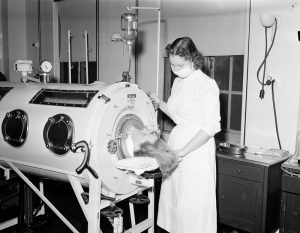
Almost 100 years ago before the living memory of most Americans another virus called polio ravaged the country. Tens of thousands died or were left with permanent paralysis from polio. New York City suffered the worst epidemic in history in 1916. It was known that a virus caused the illness but nothing else.
At this time in history there were only two scientifically based medical schools in the United States, Harvard and John Hopkins, so that most physicians practiced medicine based upon apprenticeship and anecdotal evidence. The model we use today of understanding the mechanism of disease and testing treatment in tightly controlled studies which are evaluated by experts before reporting did not exist.
Superstition and rumor ruled the day. Many unproven treatments where not only ineffective but also caused great harm. Some of the unproven treatments including giving quinine an antimalarial drug which killed 27 out of 33 children, giving poisons, doing lumbar punctures serially, and blood transfusion of human blood and horse serum .Despite these measures the mortality rate reached 25% of the thousands affected.
The March of Dimes, a foundation to raise money for research, was developed in part due to the story of President FD Roosevelt. This funding allowed science to develop effective answers.
Dr. Salk and Dr. Sabin were both able to come up with effective vaccines in the 1950s which changed the world. There was a problem in 1955 when 200,000 children received an inactive form of vaccine leading to episode referred to as the Cutter Incident. This did create the beginning of mistrust of vaccines. The United States Federal government and international governments and agencies worked together to create standards and make vaccines available worldwide keeping the risks of complications low which conquered this threat as long as vaccination continues.

